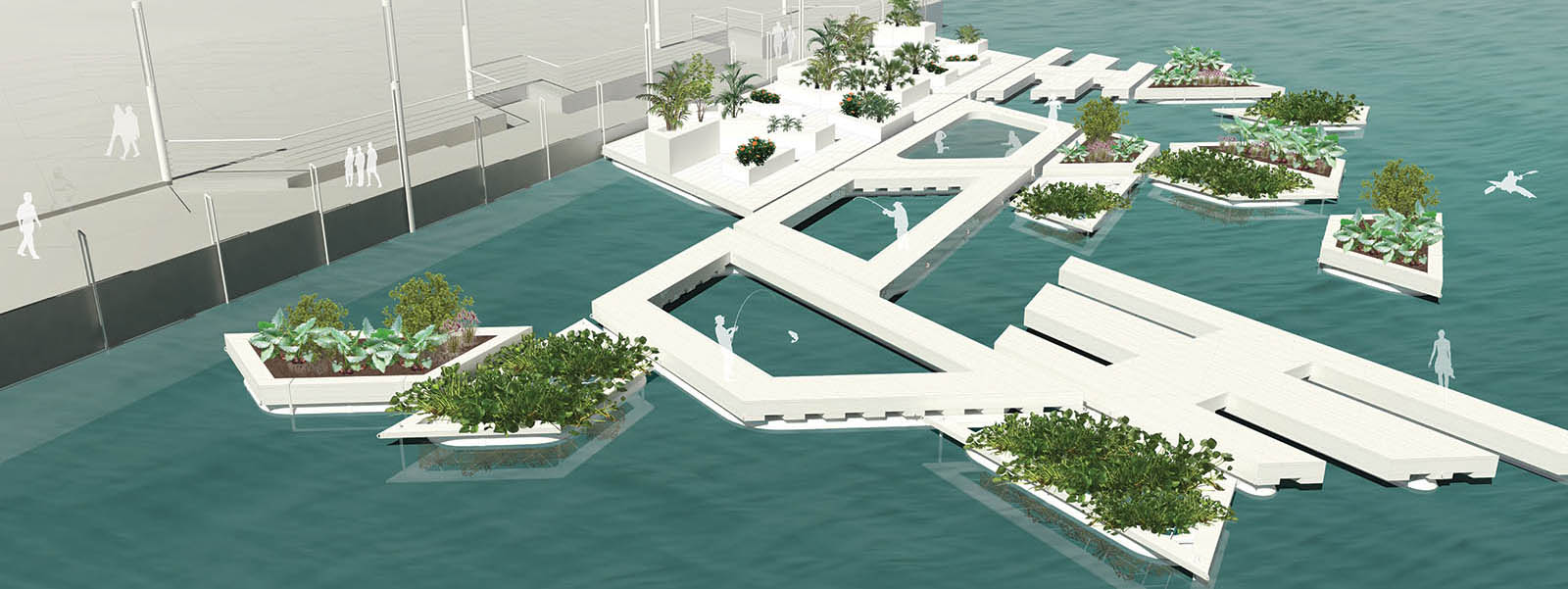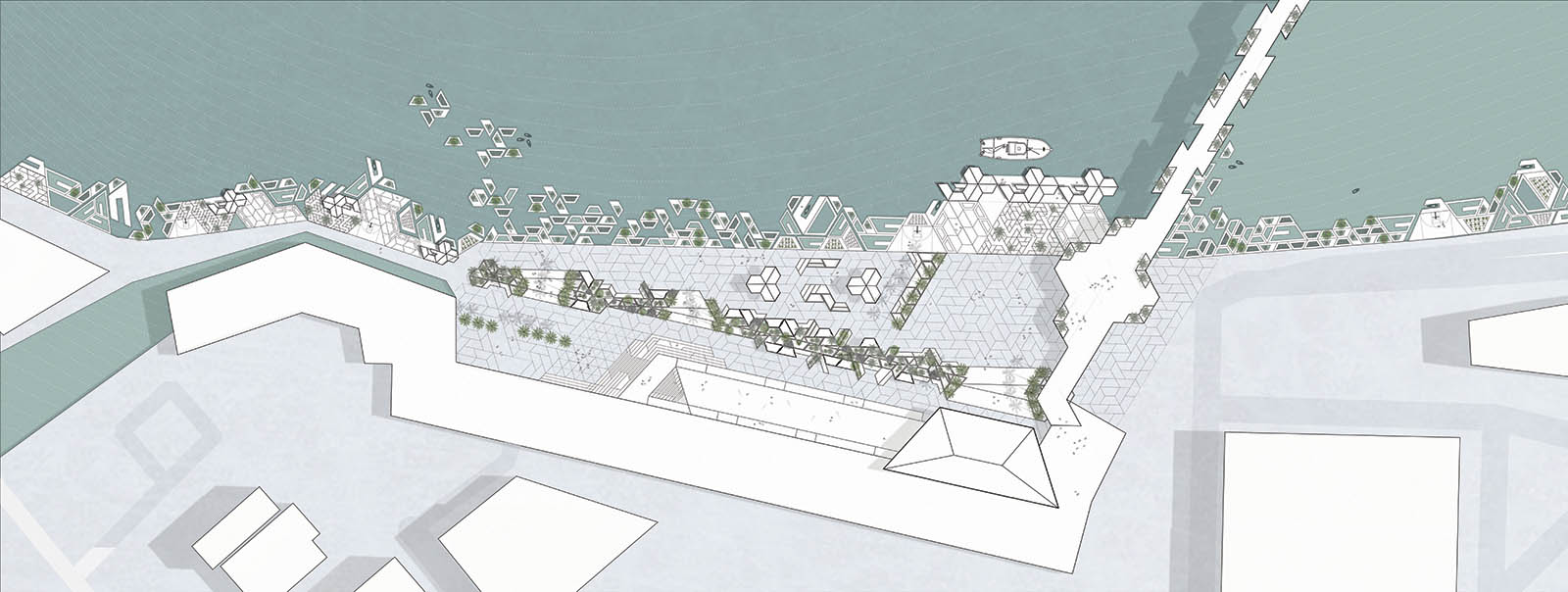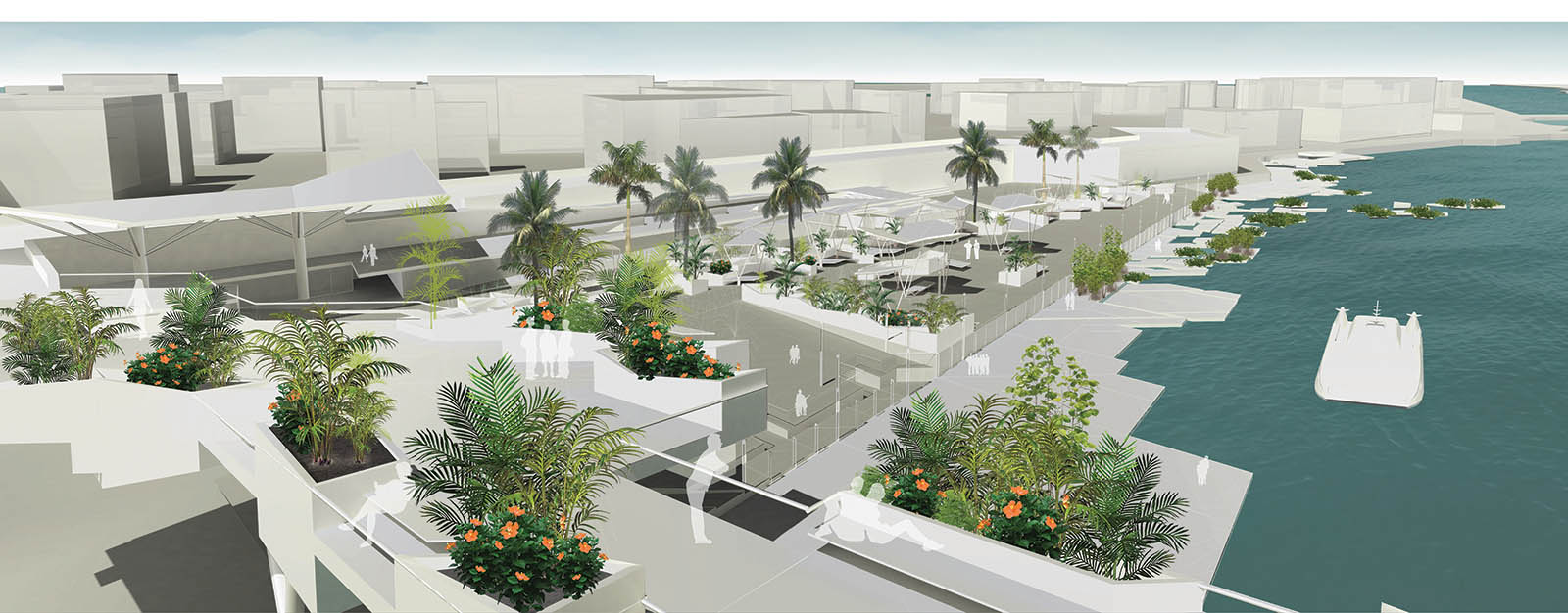Pasig River: Fluid Occupancies

by Emmanuel Coloma (MLA ’18), Rose Lee (MLA ’18), Luisa Piñeros Sánchez (MArch ’19)
A place of extremes, Manila is a megacity at a critical juncture. Since World War II, the Pasig River, which runs through the heart of the city, has been regarded as a source of unsightly pollution, damaging floods, and an interruptive physical barrier. Our design proposal rests upon the belief that the key to a vibrant future is to turn the river into a resource rather than a hindrance to the citizens.
Through examining the complex relationships among river ecology, local economy, transportation and public space, we propose an adaptive design that brings the Manileño to the forefront by allowing the Pasig River and its edges to anticipate rising waters, transportation development, and an ever-burgeoning diverse population. We believe in increasing the value of the Pasig River waterfront for all Manileños by providing an opportunity for them to attain resources, acquire knowledge, and take ownership of the land they live on.
The project is located in the Pasig River, a 25-kilometer-long river that bisects Manila, Philippines, the densest city in the world. Though called a river, it is actually a tidal estuary that connects the saltwater Manila Bay with the freshwater Laguna de Bay. The flow of water fluctuates depending on whether it is the dry or wet season.
For the scope of the project, we primarily focused on what is now a vacant lot in front of the Intramuros wall, approximately 9,500 square meters (1 hectare). Currently closed off to the public, it is a space we decided to focus on due to both its historic location and proximity to the Plaza de Mexico ferry terminal and preexisting pedestrian bridge to Binondo.
In addition, we also looked into two other potential “hub” locations situated next to the Lawton ferry terminal and the car-dominated Roxas Bridge at the mouth of the Pasig River. Exploring the potential of these two sites also lent two alternatives of our design proposal under different conditions to demonstrate its adaptability to multiple situations.

